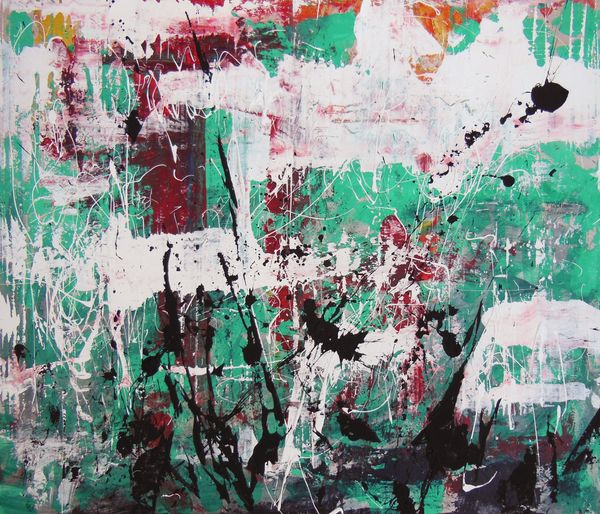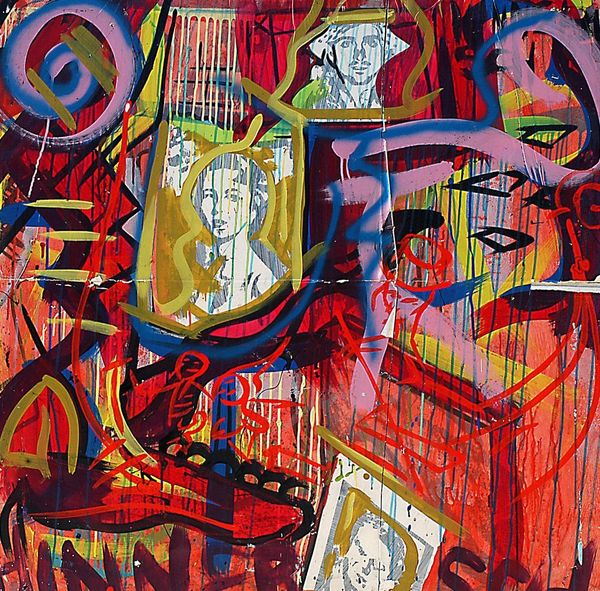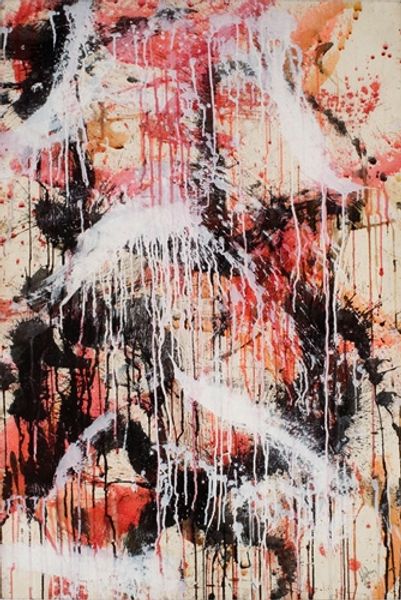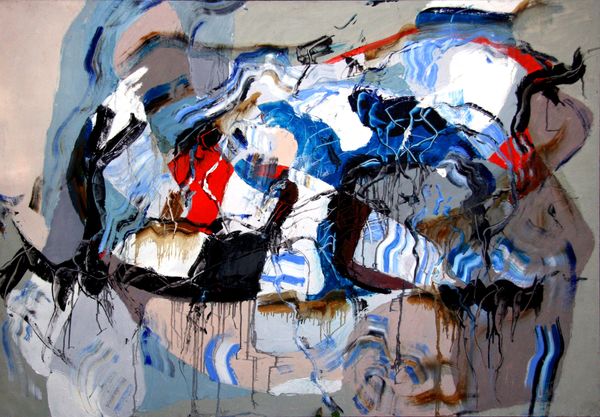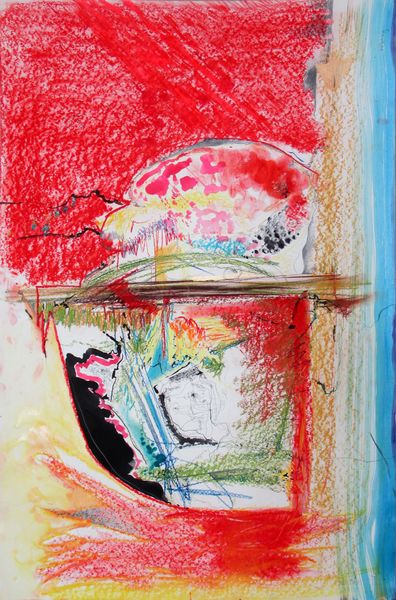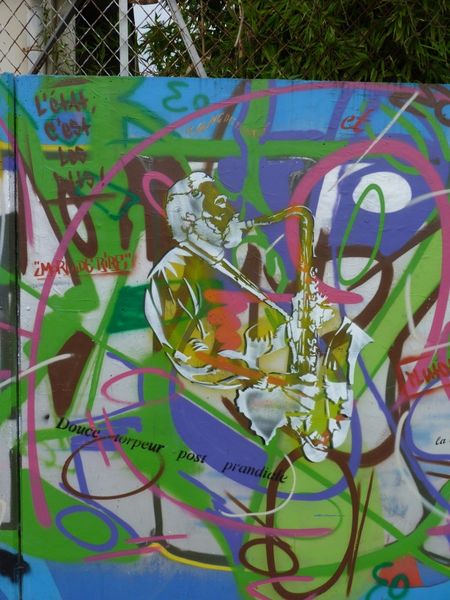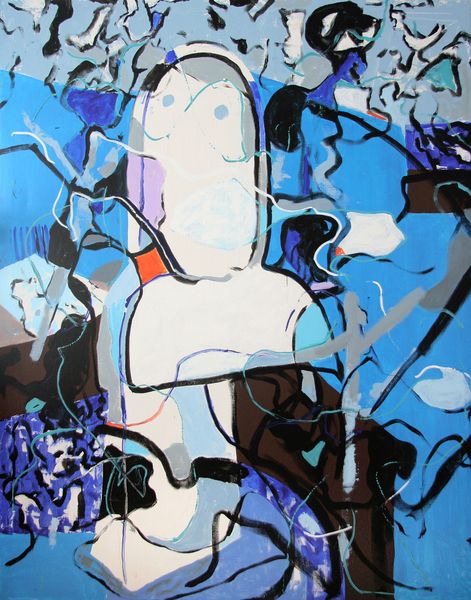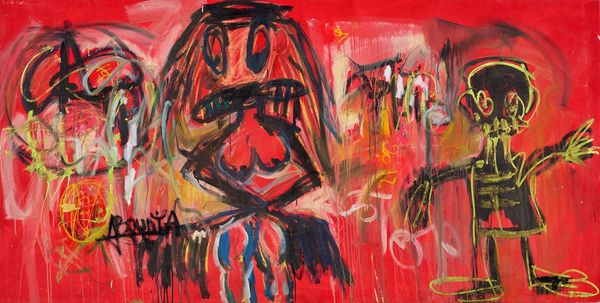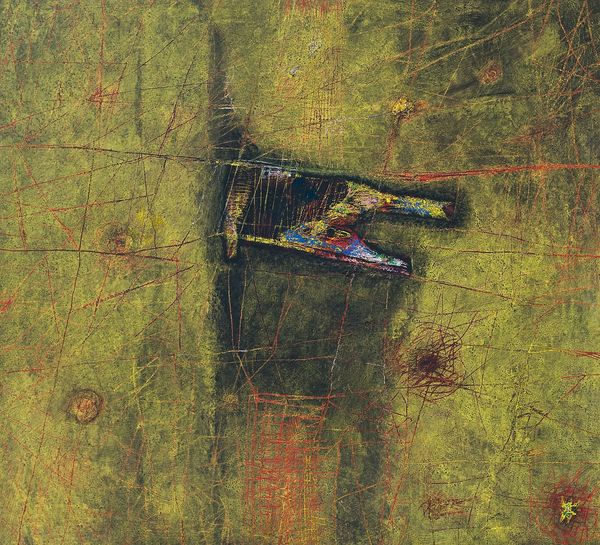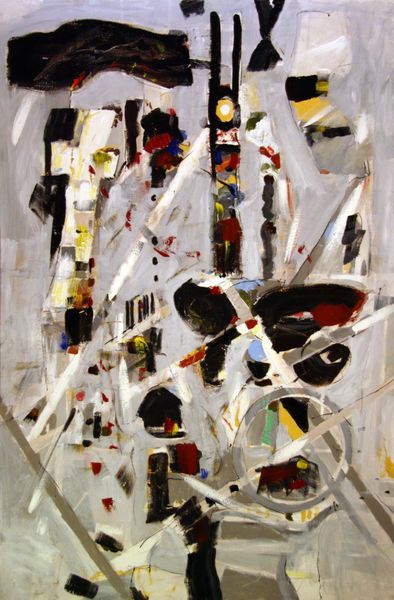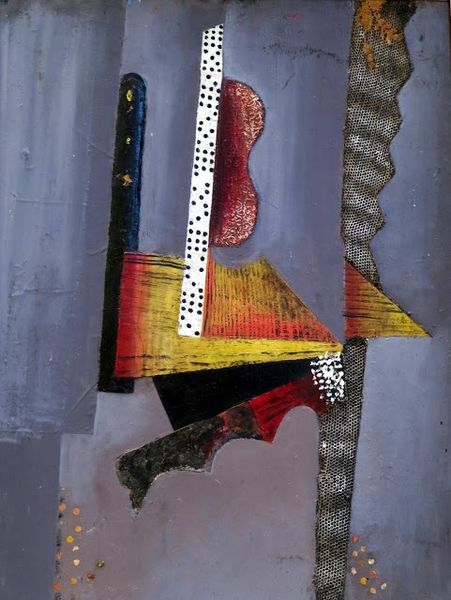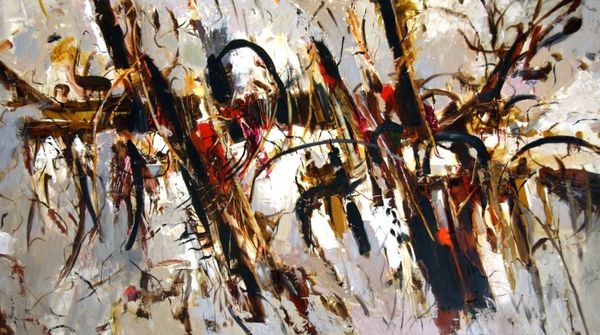
mixed-media, acrylic-paint
#
graffiti
#
mixed-media
#
street-art
#
graffiti art
#
postmodernism
#
street art
#
acrylic-paint
#
figuration
#
graffiti-art
Copyright: Francois Arnal,Fair Use
Editor: This is "Macabane sous les feuilles" by François Arnal, created in 1990. It appears to be a mixed-media piece using acrylic paint, and when I look at it, I immediately think of chaotic street art – it’s visually noisy and fragmented. What’s your interpretation? Art Historian: Indeed. Considering the era, I see this work as a dialogue with our cultural obsession with urbanization, with particular awareness about graffiti and the cultural meanings it may trigger. Given its layered composition, one might interpret the cabin or "Macabane" as representing shelter, or the home. In contrast, the overlapping street-style gestures create disruption and movement. How might those visual tensions represent a dialogue within ourselves? Editor: That's fascinating. So, the "home" symbol clashes with graffiti elements, making us reflect on the urban environment, rather than judging it? It almost sounds like the artist's intention wasn't merely decorative. Art Historian: Precisely. I notice how Arnal strategically employed symbols associated with shelter juxtaposed against markings known for rebellion. Think of the street's longstanding role in reflecting societal changes, or dissent, becoming a powerful space for visual protest. Given the title’s reference to nature ("under the leaves") in conjunction with an aggressive graffiti style, what opposing or coexisting concepts do you feel in it? Editor: Hmm, the organic title mixed with urban symbolism suggests conflict... or perhaps symbiosis between the constructed and natural worlds? It gives graffiti some artistic respect by connecting the image with familiar places and scenes, almost as a language! Art Historian: Precisely. This juxtaposition invites us to see cultural memories that might overlap and evolve over time, not in conflict but coexisting in dialogue, which shapes contemporary identities. Perhaps the memory and symbolism are linked. Editor: I never considered that! Looking closer, Arnal prompts reflection by making "street art" part of history instead of just rebellious expression. Thanks for the different way of seeing! Art Historian: My pleasure! Keep asking those insightful questions. Remember, an artwork is as dynamic and evolving as our own capacity to decode visual signs, connecting cultural memories to lived experiences.
Comments
No comments
Be the first to comment and join the conversation on the ultimate creative platform.
